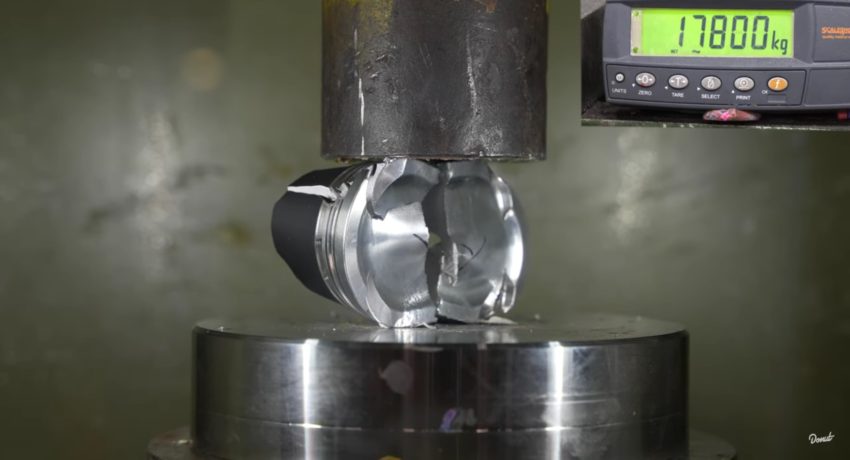
It’s commonplace these days to read a classified ad of a restomod or a heavily tuned vehicle and see that some engine parts have been replaced by forged internals. Why is this better?
Donut Media has sought to find out with a new investigation into the different metallurgical properties of cast, billet, and forged pistons that involves Mrs. Frizzle’s Floridian brother and the Hydraulic Press Channel.
Understanding the various names is important. A piston is made by melting metal, which can be a mixture of several metals to create an alloy. Then it’s poured into a mold and allowed it to set.
Read Also: Truck’s Engine Explodes During Dyno Run, Sends Pistons Flying

It’s a simple concept and it’s cheap because it’s easy to do over and over again. OEMs love casting because they are able to produce large quantities of components. The maker has the freedom to choose the alloy recipe and design of the part.
Since you’re pouring a metal broth into a fancy ice cube tray, though, there’s a certain lack of control over how the metal sets up. Looking at the crystals inside a cast piston, there’s little uniformity and sometimes air pockets and foreign substances can be left over from the casting process. That means that a cast piston is weaker than a forged or billet one even if they’re made of the exact same substance.
Instead, the billet piston is formed using a bigger piece of steel that is then cut to size. This manufacturing method ensures the metal crystals are uniformly packed. However, cutting pieces can cause a weakness in the metal’s grain.
A forged piston is made from a block of aluminum. This results in a tight grain.
The perfect alignment of grain means that there is fewer points for failure, making it stronger and allowing you to strengthen certain parts. In a nutshell, it all leads to a piston that’s able to take more of the engine’s explosive abuse.